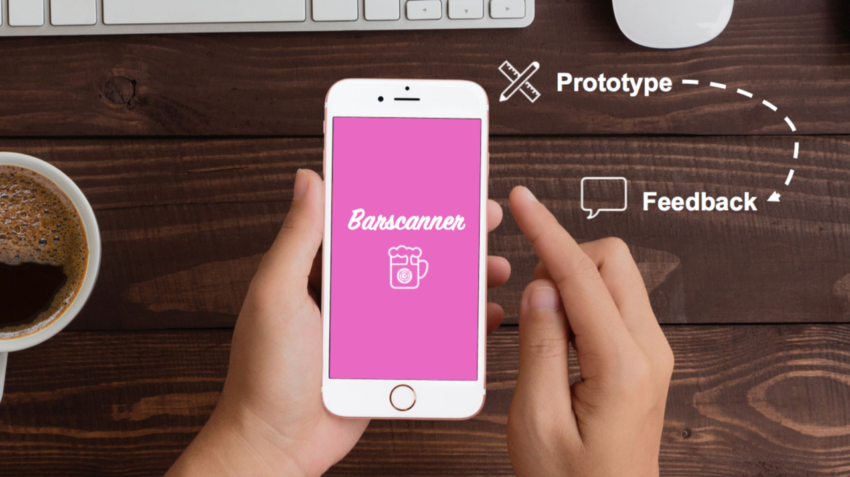Thanks to Xavier Pavie, Associate Academic Director at ESSEC Singapore, I ran a 6-week course in Design Thinking for their class of international students.
The departure point was quite exciting: those students were staying in Singapore for a few months only, so they had a fresh point of view on the behaviour of the population.
Here are some tips from a “teacher” perspective that you can use if you run a similar project in a school or in a corporate environment.
1/ Design thinking works better with strong diversity in teams
My 35 students came basically from four countries: USA, Germany, France and Brazil, so I made a fast choice of grouping them with at least one country representative per team.
The result was obvious in the first few stages of user interview and behavioural research: groups were able to compare how differently Brazilians and Germans would define hospitality or convenience.
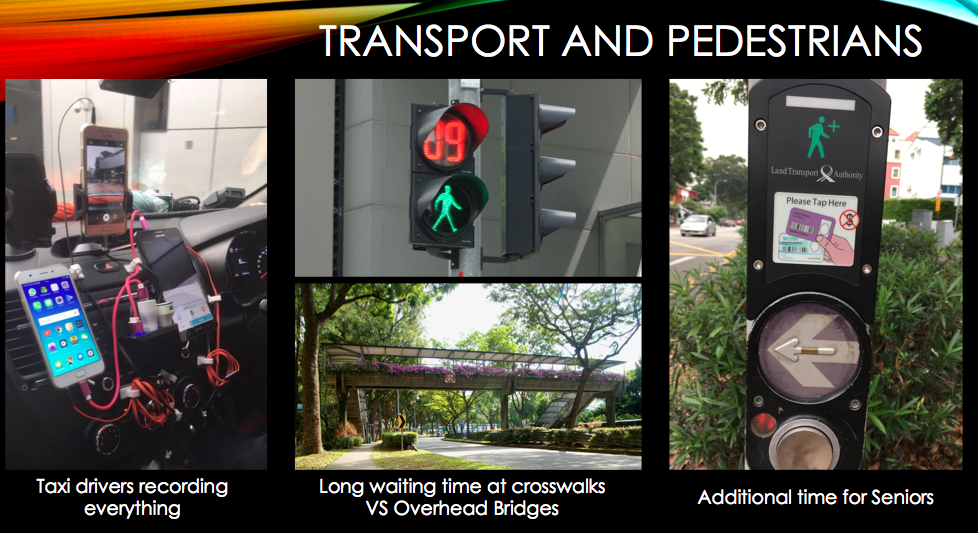
In the corporate environment, create as much as you can diverse teams, with both business and support teams, make nationalities mingle, and put customer and non-customer facing individuals in a same group.
2/ Keep the methodology of Design thinking flexible…
I’ve worked with several facilitators, experts and practitioners in Design Thinking, and often felt a strong sense of dogma within them, each of them defending strongly ONE way of doing Design Thinking (the “pure” one).
But when I created my course, it was pretty obvious there were as many variants of Design Thinking as you have of practitioners, and from a student perspective, I felt it was better to share the different “main” types of methodologies, and up to them to pick the one they like best, provided they respected the primacy of user pain points as a starting point, and fast iterations as a way to ideate/improve their prototypes.
Here you can see three variants of Design Thinking, in either 7, 5 or 3 steps.

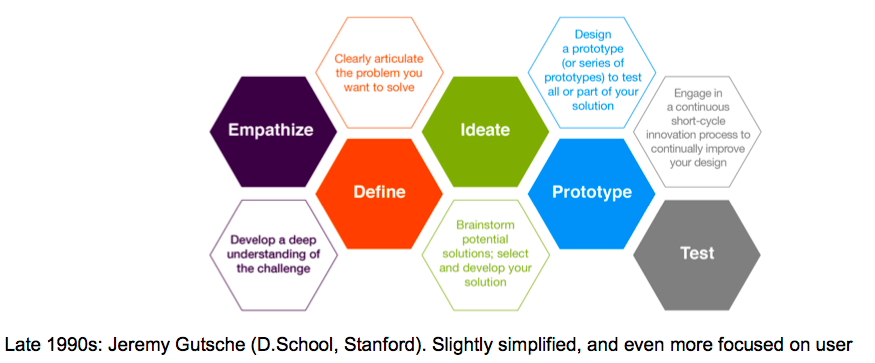
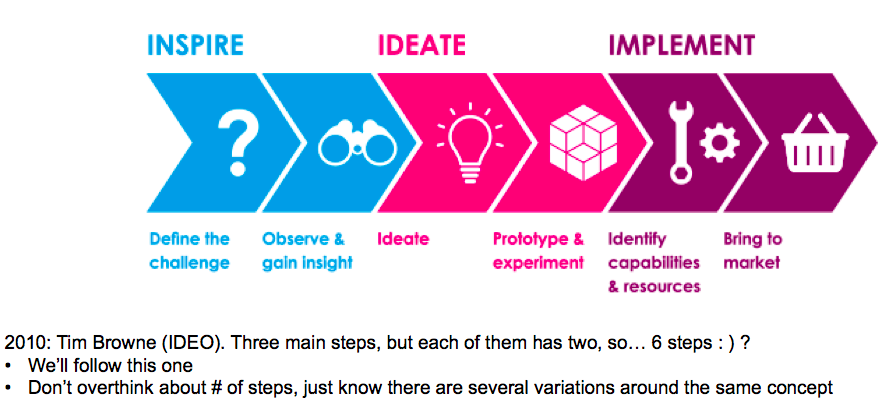
In the corporate environment: just keep things flexible, and let people take whichever they feel make more sense.
3/ … but try to keep it linear and in “loops”
Another aspect of Design Thinking that can be confusing (and possibly a reason for its perception as a “bullshit” framework as some clients express it), is that most practitioners defend its non-linearity. You have the user at the center, and then a lot of pretty messy interactions that go back and forth on the idea, the prototype, the data, etc. The below ugly picture shows it pretty well:
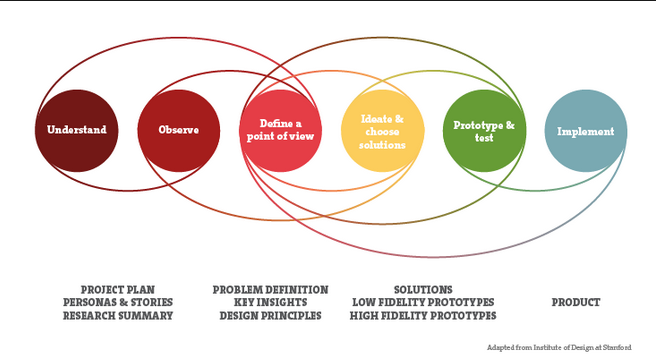
To teach it to students who had vaguely heard about it, I really found a linear approach more constructive and easy to understand. I basically instructed to follow those steps:
- Find a user pain point
- Work with the user to refine it
- Ideate with different methodologies
- Prototype fast and dirty
- Show back to users your prototype v1
- From the data you collect, go into loop #2 (restart from 1. to 6., and just do it several times until something satisfactory emerge)
That’s linear, 1 to 6, rinse, and repeat. I really found it easy to use as a teacher, and from a student perspective it made clear deliverables to do at each session.
In a corporate environment, non-linear methodologies are even harder to implement: employees are just too used to linear, processed thinking, so why not just adapt the best of what Design Thinking can bring into a way of working they already know?
I saw several times clients being confused with the non-linear, do-whatever-you-can-but-please-in-no-particular-order approach.
4/ Start with a business statement, rather than from a user pain point
As a consultant for my clients, I have the luck to know a lot of their challenges, and get to help them refine some of their business challenges.
If Design Thinking is supposed to start with the user and its pain points, I say yes, but I also found it very useful to put a business challenge from companies I knew to give it a more concrete introduction and expected outcome.
These are the six challenges I offered to the teams at ESSEC:
- Alcohol & Spirits brands: how to monetize marketing events in Singapore (usually at a loss for the brand)?
- FMCG in Organic food: how to launch a new product and keep people engaged after the launch?
- Business School: how to gain a competitive edge through the facilities of the campus?
- Retail banking: how to redesign our international transfers business?
- Facility Management: what is the workplace of the future looking like?
- Public transportation: how can we regain the trust of users in a time of crisis?
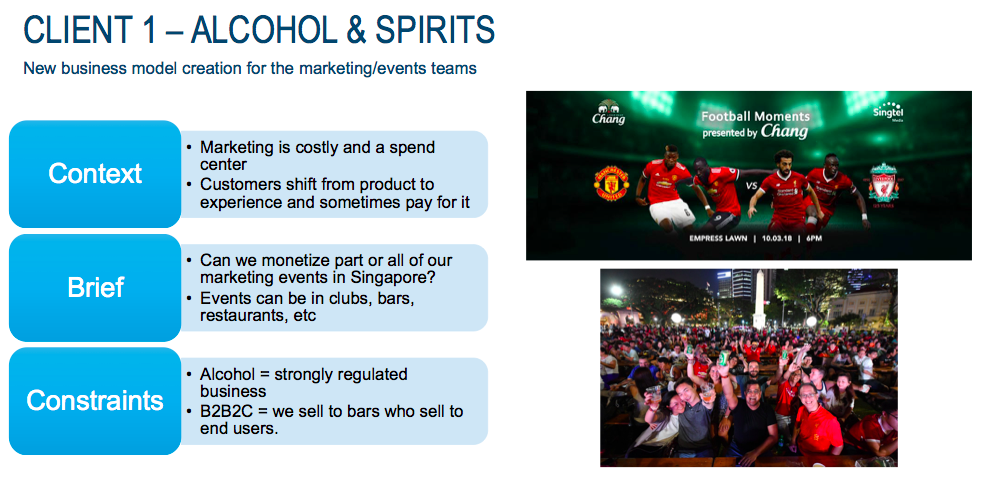 For each I stated a brief context, two ways to formulate the questions, and a set of constraints that would keep the students’ creativity in the bounds of an acceptable outcome for the client.
For each I stated a brief context, two ways to formulate the questions, and a set of constraints that would keep the students’ creativity in the bounds of an acceptable outcome for the client.
It proved very easy for the students to identify with the brand as a mock client, and I eventually invited two brands to attend the final pitch to show them what young students could do in 6 weeks, with a bit of framework and guidance.
5/ Active and passive user research to get a good result
A big part of Design Thinking, in the early stages, is to interact with the users and understand where their pain points are. A second step (see 6/ and 7/) will then, and only then, start to ideate and prototype.
There are many, many ways to understand a behaviour.
I bought the card game designed by IDEO, the leading agency in Design Thinking, to share in a casual and gamified format, some of the most common methodologies to work with users, either actively (eg: interviews, five-questions) or passively (eg: video timelapse, flow analysis).
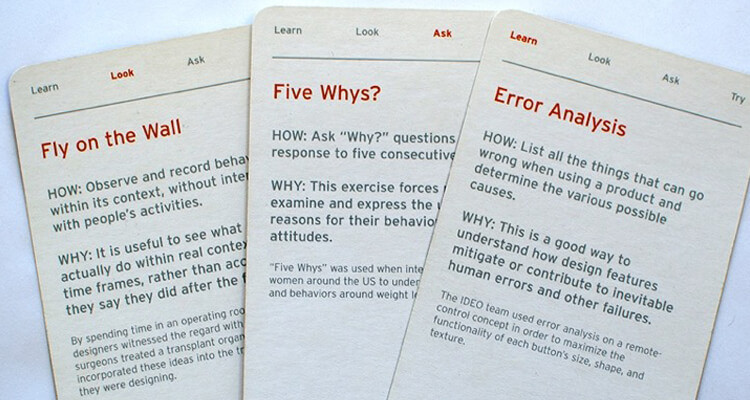
I also helped each project team to pick what I thought was the right tool for their population. It can be overwhelming both from a teacher and student perspective to browse through 30+ possible methodologies. I asked the teams to pick one active, one passive tool, and deliver the findings the following week.
If it’s complicated for your students to meet real-world users, a good trick is to make them analyze their own behaviours, or to truncate the connection to a real user by analyzing an existing startups (they should have done the job). Not ideal, but sometimes, you need to be flexible.
6/ Creativity is a muscle: three ways to generate new ideas
Once the findings from user research were in the bag, we spent a whole session on how to ideate, and for me, it was the best session.
It feels both very easy and very hard to ideate. Easy because everybody have ideas, and hard because too simple, biased ideas will always make their way through your initial research.
Some tools I used to force the students’ brains to ideate differently:
- Bad idea: focus on giving the worst possible idea to the problem your user confront. For instance: “create an alcoholic drink for kids”, “create an extra fee to punish consumers who make a mistake during their bank transfer”. The bad idea owner must defend it to the group and find positive ways to do so. Eg: the alcohol drink for kids might help to create better bonds with parents. The punishment fee for mistakes on transfers might gamify the behaviour of consumers. It’s easy from here to keep the positive points and rework them backwards to get a “good” idea. Eg: create a two-in-one drink with one alcoholic drink for the parent, and one soft drink for the kid. create a reward system for banking users who help other users to fill correctly their transfer fields.
- Mash-ups: focus on the one quality you want to deliver to your user-in-pain, for instance, speed, or convenience. Think of what brands embody the best this quality: Facebook, Uber, Amazon, Singapore Airlines… Now try to apply this brand to your ideas. What’s the Facebook version of a savings account? What’s the Tinder of vegan people like?
- Yes, and!: a classical exercice to break the ice and foster positive, constructive ideation in a group. A team member starts to give an idea, and each next team member can only iterate by building on the previous idea, and starting his sentence with Yes, and! Eg: let’s create a smart armchair for digital nomads to work better. Yes, and let’s make it like a bubble to isolate the nomad from outside interference! After a few Yes, and, the idea will look more complex, while avoiding to criticize any of the team members’ inputs.

7/ Fast-prototyping tools that don’t require lot of preparation
Once the ideas are there, they need to be put in practice as fast as possible. After the user research, this is the only point in Design Thinking where the teacher or facilitator can not accept another action. Ideas are worth zero unless put in a shape, and presented to the users.
Here are some tools to prototype easily an idea into something showable to users:
- Paper prototyping: draw it! no words. You can draw an app interface, a connected device, a new layout for a room… just no words!
- Interactive app mockups: InVision is a great tool to create, with no technical or photoshop skills, an interactive mockup for an app. You can have users click on the different screen (directly from a smartphone), making the immersion like in the real-world (minus the data connection in the background).
- Bodystorming: harder, as it involves the project team to mimick, and role-play, the new interaction they have ideated. But for teams who feel extrovert enough, it’s a very good bonding moment.
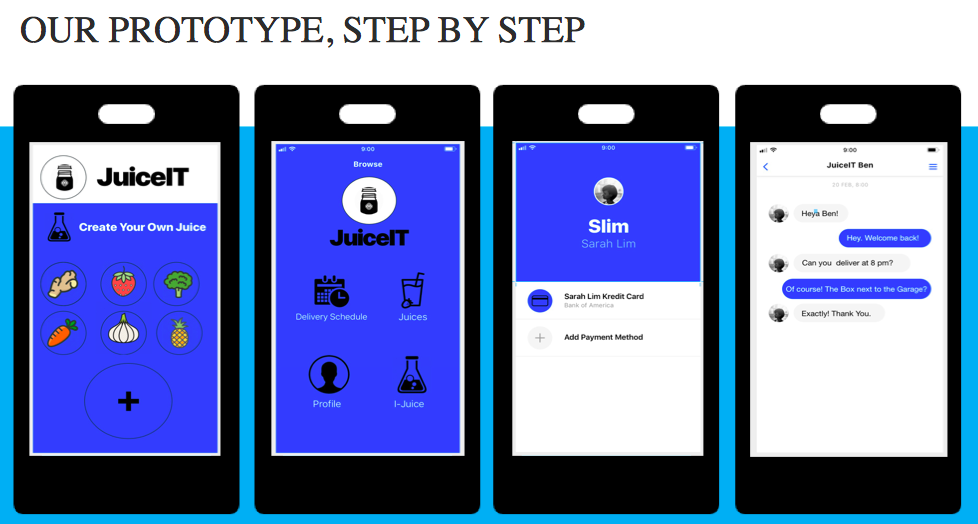
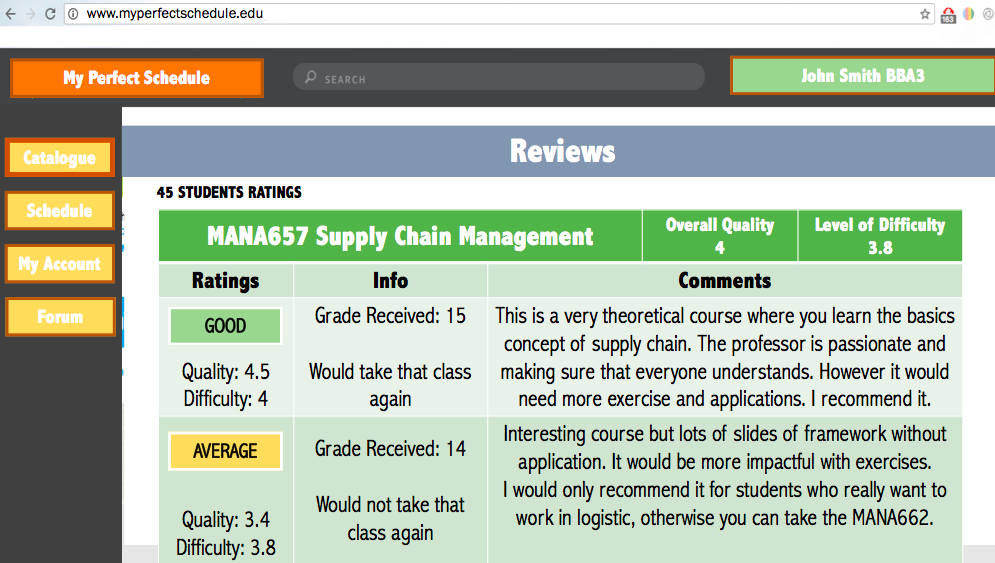
8/ Prepare a pitch with some basic business & customer elements
At the end, Design Thinking is about making something desirable by the user, and viable for the business who is going to pay for the development and deployment of this innovation.
To conclude the session, a proper pitch of the journey of each team in a few minutes was the last step. It’s critical in any environment, and even more a corporate one, to be able to communicate on the findings, the learnings. I asked the team to use the following frameworks:
Experience Map: identifying each main step of the user journey, and analyzing what they try to achieve, how, with what type of emotion, and the “outcome”, are they satisfied or not? When satisfaction is not there, an opportunity to create a better service is around the corner. 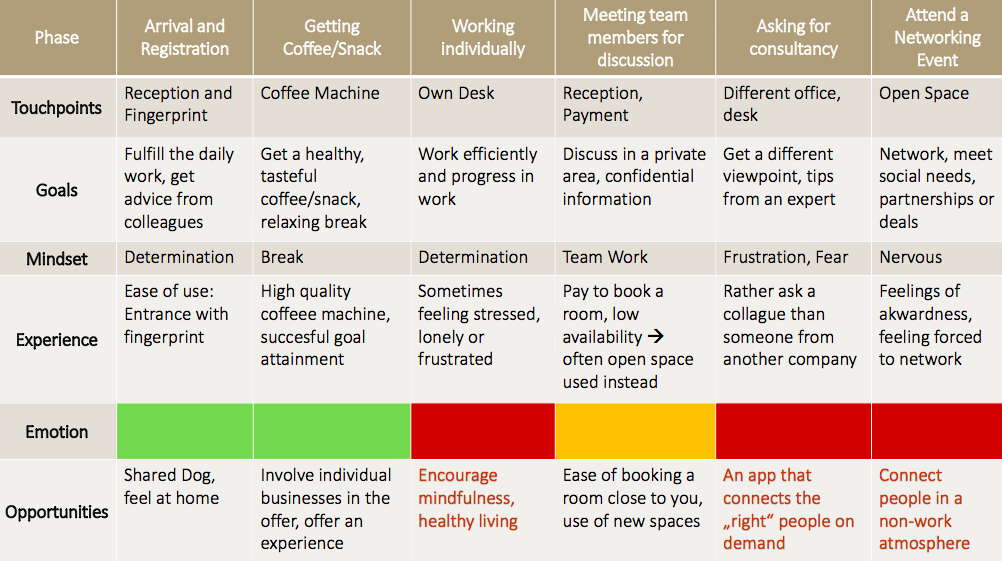
Business Model Canvas: a classical tool to make teams think of the business consequences of their ideas in a comprehensive way, and to avoid any dead angle such as partnerships/distribution, costing over time, potential other business models, etc.
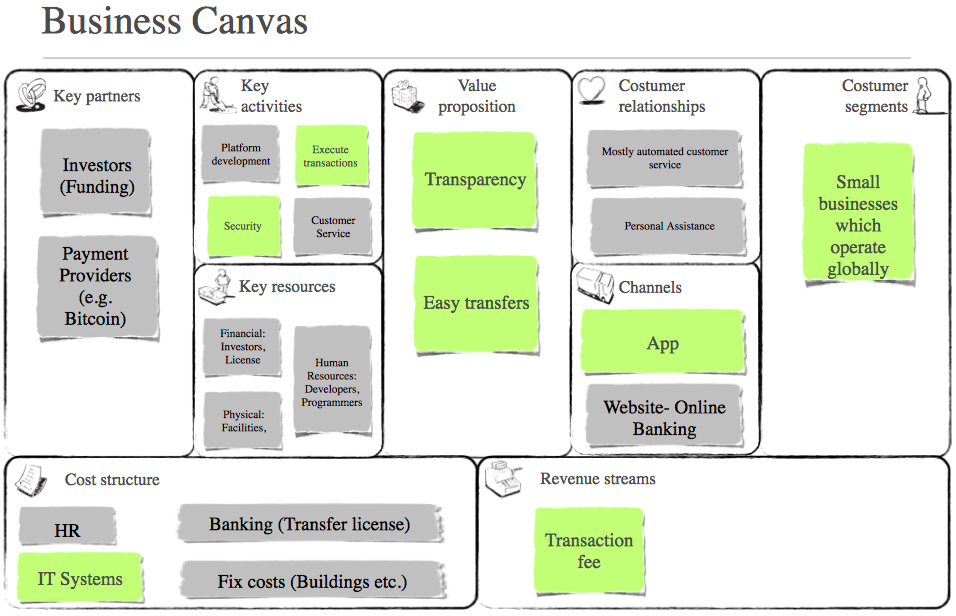
Overall, I was surprised how far the students well in just 6 weeks. My feeling is that a linear approach, with sessions every week or twice a week and a clear topic + deliverable to do, was the right way to see a “messy” methodology deliver a few good prototypes.
Happy to read your tips to make Design Thinking approachable for anyone!
